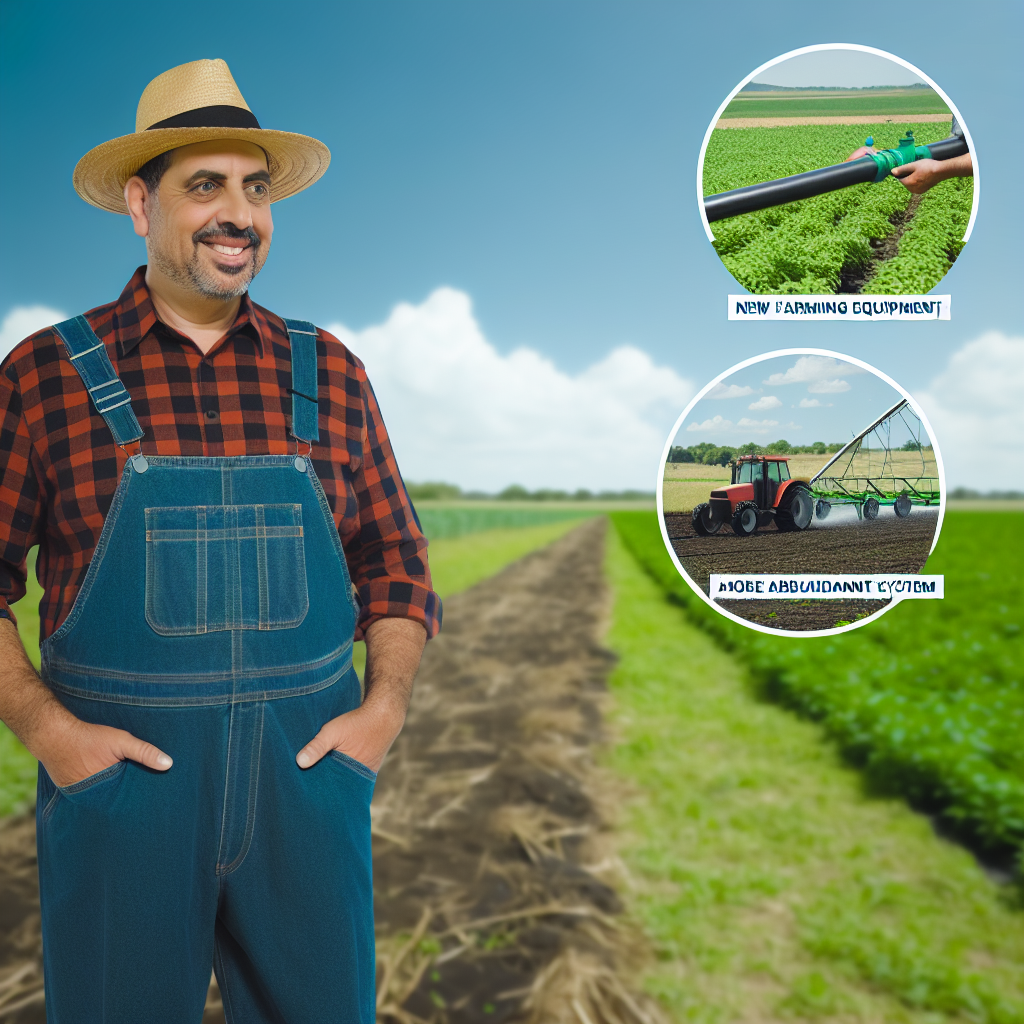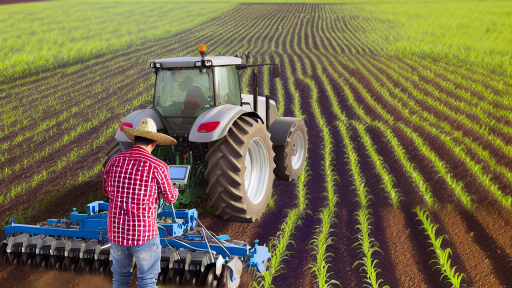Overview of Current Agricultural Policies Impacting Farm Aid
Key Agricultural Policies
The federal government plays a crucial role in shaping agricultural policies.
Recent legislation affects farm aid significantly.
Programs like the Farm Bill provide essential funding to farmers.
These policies target various sectors, from crop insurance to disaster relief.
Farm Bill Overview
The Farm Bill is a comprehensive piece of legislation.
It addresses issues like food security and rural development.
Additionally, it impacts conservation programs and nutrition assistance.
Farmers rely on this bill for support during challenging periods.
Crop Insurance Programs
Crop insurance safeguards farmers against yield loss.
This policy has gained importance amid climate change challenges.
Farmers can select from various plans based on their specific needs.
Moreover, these programs have seen increased funding in recent years.
Disaster Relief Initiatives
Natural disasters pose a significant threat to agricultural production.
Federal disaster relief programs aim to support affected farmers.
Such programs provide financial assistance during crises.
Transform Your Agribusiness
Unlock your farm's potential with expert advice tailored to your needs. Get actionable steps that drive real results.
Get StartedAdditionally, they facilitate recovery and rebuilding efforts.
Impact of Policy Changes
Changes in agricultural policies directly influence farm aid availability.
Recent shifts have raised concerns among small-scale farmers.
Increased funding for large farms often leads to disparities.
Consequently, smaller farms face greater financial challenges.
Future Directions
Policymakers consider long-term sustainability in agriculture.
A focus on climate-resilient practices is crucial.
Future legislation may promote equitable access to resources.
Farmers and advocates must remain vigilant during these changes.
Historical Changes in Agricultural Policy and Their Effects on Farm Aid
Overview of Agricultural Policy Shifts
Agricultural policies have evolved significantly over the decades.
These changes have directly influenced the structure of farm aid programs.
Initially, farm aid focused on price supports and subsidies.
However, shifts in policy have introduced new complexities.
Key Policy Changes Over the Years
The New Deal era marked a significant transformation in agricultural policy.
It introduced programs intended to stabilize crop prices during the Great Depression.
Subsequently, the introduction of the Agricultural Adjustment Act altered aid distribution.
Farmers received assistance based on their production levels and needs.
In the 1980s, farm policy shifted again due to changing economic conditions.
Impact of the 1985 Farm Bill
The Food Security Act of 1985 introduced major reforms.
This bill aimed to reduce government intervention in the market.
It led to the adoption of approximate cost-sharing programs for farmers.
Additionally, it emphasized conservation practices as criteria for assistance.
Modern Agricultural Policy Trends
Recent policies have focused on sustainability and environmental benefits.
The Farm Bill of 2018 further emphasized these aspects.
Showcase Your Farming Business
Publish your professional farming services profile on our blog for a one-time fee of $200 and reach a dedicated audience of farmers and agribusiness owners.
Publish Your ProfileFurthermore, it expanded access to safety net programs for smaller farms.
Technological Influence on Policy Changes
Technological advancements have reshaped agricultural practices.
Policies have adapted to incorporate precision agriculture techniques.
These techniques enhance productivity while minimizing resource use.
Effects of Policy Changes on Farm Aid Distribution
Changes in policy have led to diverse aid opportunities for farmers.
However, some farmers have faced challenges accessing these programs.
Smaller and underserved farmers often struggle with bureaucratic processes.
Future Directions for Farm Aid
Looking ahead, policymakers must consider inclusivity in farm aid programs.
Additionally, supporting sustainable practices will be crucial.
This approach will ensure a more resilient agricultural sector moving forward.
Analysis of Recent Legislative Changes in Farm Aid Programs
Overview of Recent Changes
Recent legislative changes have significantly shaped farm aid programs.
These modifications affect funding allocations and eligibility requirements.
Understanding these changes is crucial for farmers and stakeholders.
Key Legislative Developments
Several new bills have emerged in Congress impacting farm aid.
For instance, the Agriculture Improvement Act introduced substantial reforms.
Additionally, the proposed Farm Safety Net Enhancement Act aims to safeguard farmers.
Stakeholders must analyze these documents to comprehend their implications.
Funding Adjustments and Priorities
Funding for various programs has witnessed noticeable changes.
Direct payment programs have seen increases to support struggling farmers.
Conversely, funding for certain environmental initiatives has decreased.
Consequently, agricultural policy now emphasizes both supply and sustainability.
Impact on Local Farmers
Many local farmers will experience immediate effects from these changes.
For example, larger farms may benefit from increased funding allocations.
Smaller farms, however, face challenges due to shifting priorities.
This disparity raises concerns for the agricultural community.
Future Considerations
Looking ahead, stakeholders expect further adjustments in farm aid policies.
Lawmakers are likely to respond to ongoing economic challenges in agriculture.
Furthermore, public opinion may influence future legislative actions.
Engagement with grassroots movements could drive necessary reforms.
Discover More: Common Mistakes When Applying for Farm Aid
Impact of Subsidy Adjustments on Small vs. Large Farms
Overview of Subsidy Adjustments
Subsidy adjustments are reshaping the agricultural landscape significantly.
These changes impact both small and large farms differently.
Understanding these impacts is crucial for policymakers and farmers alike.
Effects on Small Farms
Small farms face unique challenges due to subsidy changes.
They often rely heavily on government support for their operations.
Reduced subsidies may threaten their financial stability.
Consequently, many small farm owners fear for their futures.
Moreover, these farms help maintain local economies.
Without adequate support, rural communities may suffer economically.
Access to Resources
Small farms typically struggle to access financial resources.
Showcase Your Farming Business
Publish your professional farming services profile on our blog for a one-time fee of $200 and reach a dedicated audience of farmers and agribusiness owners.
Publish Your ProfileWith subsidies cut, obtaining loans may become more difficult.
This challenge limits their ability to invest and grow.
As a result, many small farms may consider closing their doors.
Adapting to Change
However, some small farmers are finding alternative ways to adapt.
Diversifying crops can help mitigate risks associated with reduced aid.
Others explore sustainable practices to attract new markets.
Innovation becomes essential for survival in a changing market.
Effects on Large Farms
In contrast, large farms benefit from economies of scale.
These farms often have the resources to absorb subsidy reductions.
However, they too face challenges in adapting to policy shifts.
Large farms may experience reduced profit margins as a result.
Financial Resilience
Financial resilience is a key advantage for larger operations.
They can utilize better access to credit and investment opportunities.
Additionally, many large farms can invest in technology to increase efficiency.
This investment helps offset potential losses from subsidy changes.
Market Competition
Nonetheless, the competition among larger entities remains fierce.
Price fluctuations may affect their ability to compete successfully.
Lower subsidies may encourage some large farms to consolidate.
This trend could reshape the agricultural market structure.
Looking Forward
As policymakers consider future changes, understanding these impacts is crucial.
Balancing the needs of small and large farms could promote equity.
Encouraging innovative practices may benefit all segments of agriculture.
Ultimately, the goal should be sustainable growth for the agricultural community.
Explore Further: Financial Assistance Resources for New Farmers
Role of Federal and State Governments in Implementing Agricultural Policy Changes
Federal Government Responsibilities
The federal government plays a crucial role in shaping agricultural policy.
Through various agencies, it administers programs that support farmers.
For example, the United States Department of Agriculture (USDA) implements national initiatives.
Furthermore, it provides financial assistance to enhance agricultural productivity.
In addition, federal policies adapt to changing market conditions and farmer needs.
This flexibility helps ensure that farmers remain viable and competitive.
State Government Involvement
State governments also impact agricultural policy at the local level.
They develop programs tailored to regional agricultural dynamics.
Moreover, state agencies collaborate with local farmers to address specific challenges.
For instance, they may provide grants for sustainable farming practices.
State policies often complement federal programs to optimize resource use.
This partnership enhances the effectiveness of agricultural support measures.
Coordination Between Federal and State Policies
Effective agricultural policy requires strong coordination between levels of government.
Federal and state agencies must align goals to maximize impact.
This alignment ensures that policy changes address both local and national needs.
Additionally, shared resources help streamline funding and implementation.
Showcase Your Farming Business
Publish your professional farming services profile on our blog for a one-time fee of $200 and reach a dedicated audience of farmers and agribusiness owners.
Publish Your ProfileAs a result, farmers receive more consistent and reliable support.
Examples of Recent Changes
Recent policy changes highlight the evolving nature of agricultural support.
One such change involves increased funding for climate-resilient farming practices.
Another change focuses on expanding access to affordable crop insurance.
These initiatives reflect the governments’ commitment to sustainable agriculture.
Moreover, they demonstrate a responsive approach to farmers’ concerns.
Find Out More: Comparing Different Farm Subsidy Programs

Case Studies: Success and Challenges of Farm Aid under New Policies
Success Stories
Several farmers have benefitted significantly from recent policy adjustments.
For instance, Sarah Jenkins, a corn farmer in Iowa, received timely assistance.
This support helped her recover from the adverse effects of extreme weather.
Moreover, new funding channels allowed her to invest in sustainable practices.
As a result, her yields increased by 20% over the past season.
Similarly, a grape cooperative in California experienced substantial gains.
With enhanced farm aid, they expanded production and improved overall quality.
This led to a more robust presence in both national and international markets.
Additionally, the cooperative implemented innovative irrigation techniques.
These advances contributed to reducing water consumption by 30% annually.
Challenges Faced
Despite these successes, some farmers encountered significant hurdles.
John Ramirez, a dairy farmer in Wisconsin, struggled to access aid.
The application process became increasingly complex and time-consuming.
Consequently, he missed critical funding deadlines that impacted his operation.
Another challenge arose in regions dependent on crop insurance.
The recent policy changes led to confusion among local farmers.
Many were unaware of essential updates affecting their insurance claims.
This lack of clarity delayed financial support and created financial strain.
Collaboration and Advocacy
Collaboration among stakeholders plays a vital role in overcoming these issues.
Local advocacy groups help educate farmers about available resources.
Moreover, these groups work with policymakers to simplify processes.
They focus on improving communication to ensure all farmers receive aid timely.
As a result, some newly established partnerships show promising outcomes.
These collaborations seek to streamline applications and enhance transparency.
Farmers are beginning to see the benefits of a more structured approach.
See Related Content: Accessing Emergency Financial Aid for Farms
Future Trends in Agricultural Policy and Anticipated Effects on Farm Aid
Shifts Toward Sustainability
Recent changes in agricultural policy focus on sustainability.
Governments increasingly encourage environmentally friendly practices.
As a result, farms may receive more aid for adopting sustainable methods.
This shift promotes practices that benefit both the environment and farmers.
Technological Integration in Farming
Technology plays a pivotal role in shaping agricultural policy.
Modern policies now incorporate digital tools for better farm management.
Drones, sensors, and software analytics are becoming commonplace.
Showcase Your Farming Business
Publish your professional farming services profile on our blog for a one-time fee of $200 and reach a dedicated audience of farmers and agribusiness owners.
Publish Your ProfileThese advancements can increase yields and reduce costs for farmers.
Impact of Climate Change Policies
Climate change initiatives are influencing agricultural aid programs.
Policies are emerging that specifically address climate resilience.
Farmers must adapt to changing weather patterns and regulations.
Consequently, aid may focus on climate-smart agriculture methods.
Market Access and Trade Policy Changes
Trade policies are evolving, impacting farm aid distributions.
New agreements may prioritize local food systems over global trade.
Farmers could see changes in subsidy structures based on market access.
These shifts aim to bolster local agriculture and food security.
Rising Focus on Food Security
Food security has emerged as a key concern in agricultural policymaking.
Policies increasingly aim to ensure stable food supplies for populations.
As a result, aid may prioritize farms that contribute to food security.
Supporting diverse farming practices will be crucial for resilience.
Community and Collaborative Approaches
There is a growing trend towards community-focused agricultural policies.
Collaboration among farmers can lead to shared resources and knowledge.
Farmers might benefit from collective investment and cooperative structures.
Aid programs may recognize and support these collaborative efforts.
Stakeholder Perspectives on Policy Changes
Farmers and Their Concerns
Farmers face uncertainty with recent agricultural policy changes.
Many express worry about reduced aid and financial support.
Additionally, some farmers find it challenging to adapt their practices.
They fear that new regulations may increase operational costs.
This could hinder their competitiveness in the market.
Farmers also emphasize the importance of reliable funding sources.
For instance, they appreciate direct payments and subsidies.
Without these, many may struggle to sustain their farms.
Legislators’ Perspectives
Legislators play a crucial role in shaping agricultural policies.
They seek to balance interests between urban and rural communities.
While supporting farmers, they also consider budget constraints.
Some legislators advocate for reforms to enhance efficiency.
They believe that modernizing policies can better support farmers.
Many legislators emphasize the need for transparency in funding.
This builds trust between government and farming communities.
Advocacy Groups and Their Roles
Advocacy groups work tirelessly to represent farmers’ interests.
They often conduct research to provide data-driven insights.
These groups highlight the need for equitable aid distribution.
Additionally, they push for sustainable farming practices.
Advocates argue that policies should address climate change impacts.
Moreover, they advocate for enhanced funding for small farms.
Groups like the National Farmers Union promote fair policies.
Opportunities for Collaboration
Collaboration among stakeholders can lead to effective solutions.
Showcase Your Farming Business
Publish your professional farming services profile on our blog for a one-time fee of $200 and reach a dedicated audience of farmers and agribusiness owners.
Publish Your ProfileFarmers, legislators, and advocacy groups need open discussions.
Through dialogue, they can identify common goals.
Worker well-being should remain a priority in policy design.
Collectively embracing innovation can enhance agricultural resilience.
Such partnerships can ensure a sustainable future for farming.




